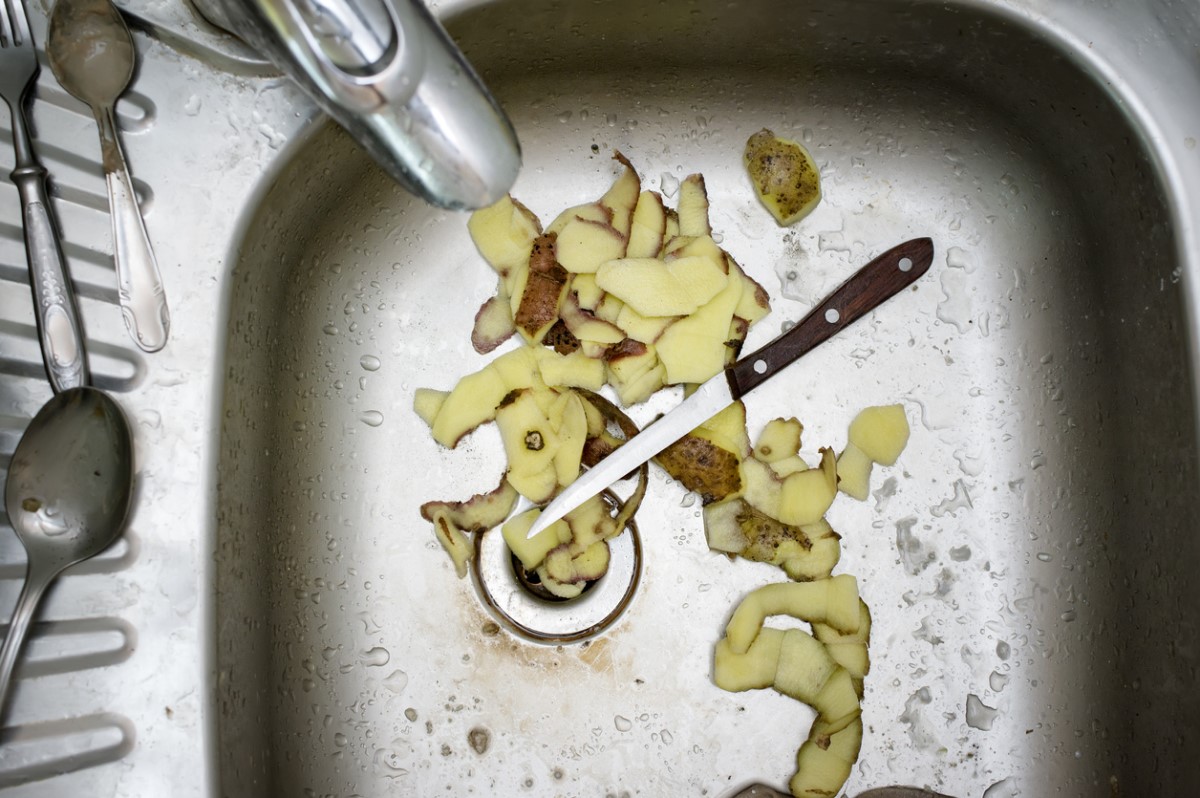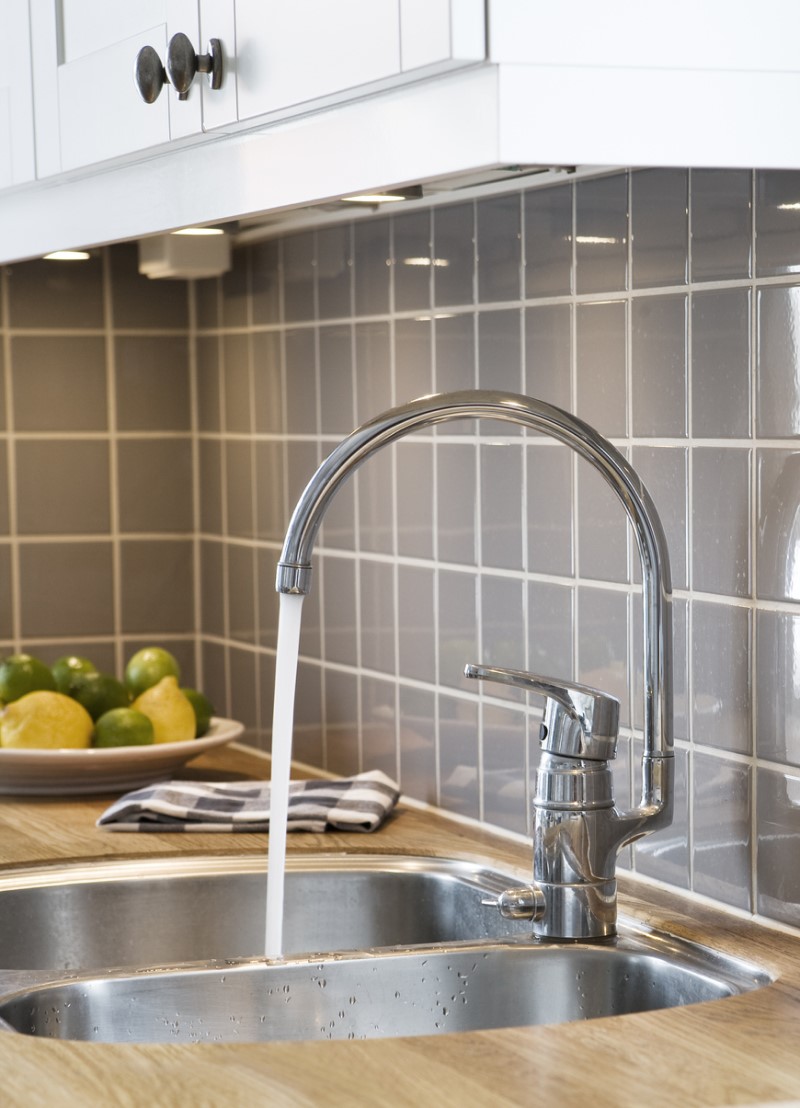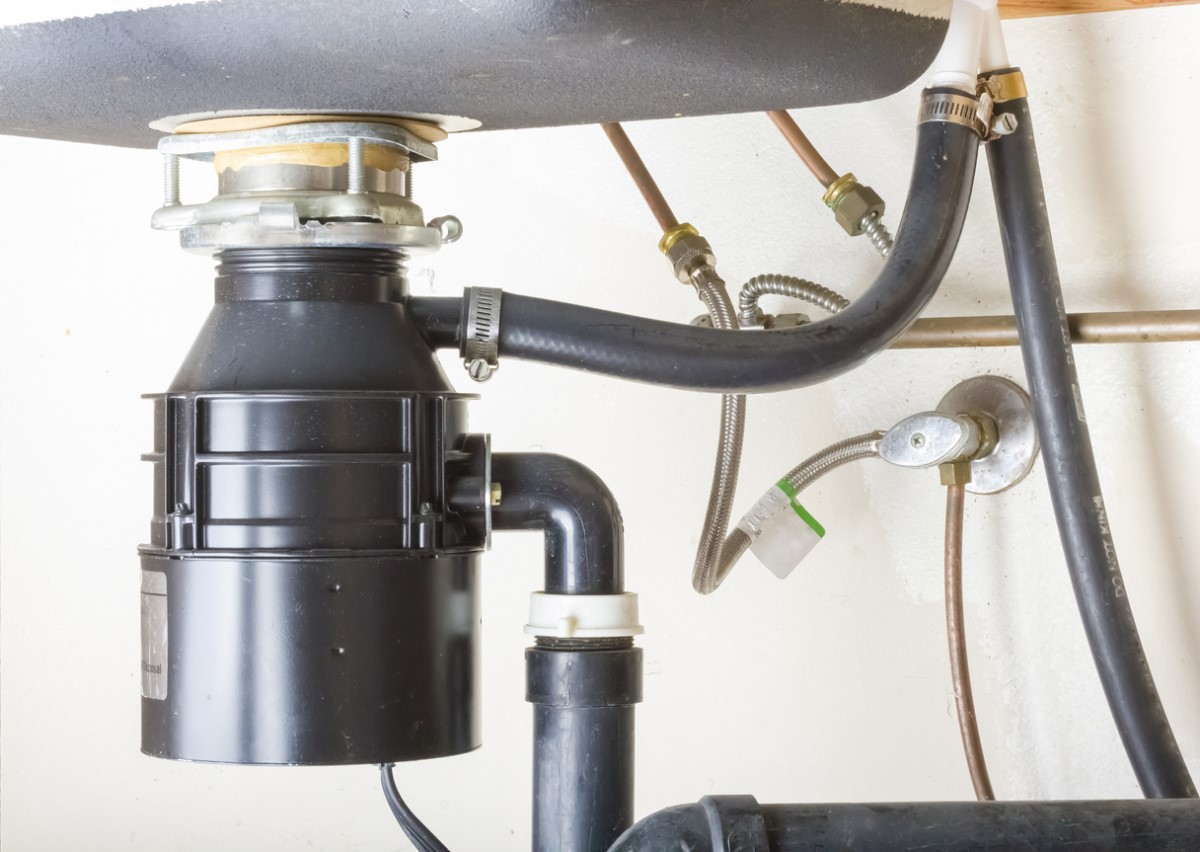We may earn revenue from the products available on this page and participate in affiliate programs. Learn More ›
Your under-sink workhorse doesn’t need strict maintenance to continue out its duties—only sensible care. You probably already know that fibrous foods like banana skins, broccoli, celery, corn husks, and potato peels can tangle and stop the blades of your garbage disposal. Other bad choices include bones and eggshells. But are you aware that dumping coffee grounds or starchy food into the unit can clog the pipes? Heed these seven other best and worst practices if you want to keep using your garbage disposal as long as possible.
DO run the garbage disposal every few days.
Even if you don’t have to grind any food scraps up, you should run the appliance with cold water to keep the blades from rusting from lack of use. This also gives any food that might have stuck to the sides of the appliance from a previous use will another chance to wash out.

DON’T send fibrous, starchy, or hard leftovers down the drain.
Avoid all that can break the appliance or gum up the works; if you’re uncertain, check to see if it made this list of no-nos. The garbage disposal is best saved for ice cubes and softer foods—and even those should be cut up small before sent down.
DO power down your garbage disposal when you need to repair or clean it.
Safety first: Unplug the unit or cut power to the kitchen at the circuit breaker before taking any action to prevent the worst from happening while you work around the bladed appliance.
DON’T use your fingers to pull out any clogs.
Instead, avoid injury from the blades by using pliers or tongs to remove any scraps that have not been finely ground up.
DO try untangling any fibers wrapped around your garbage disposal’s blade using the wrench that came with your unit.
With that tool, you simply turn the nut at the base of the unit, then press the small red reset button in the center, and flip the switch to restart.
DON’T use bleach or commercial drain cleaner to unclog.
When you turn on your appliance next, the caustic chemicals might fly up and out. If it’s a case of the wrong place at the wrong time, that could result in bleach splashed in your eyes after flipping the switch to send food scraps down the drain.

DO ward off odors with warm water and lemons.
After you’ve reconnected your appliance, pour warm (not hot) water into your garbage disposal as it grinds cut-up lemons. The wedges are high in citric acid, which boasts anti-bacterial properties, and their peels will scrub on the way down—an all-natural remedy!
DON’T pour hot water into a clogged unit.
The heat will melt fats and make unclogging the garbage disposal even more difficult to accomplish.
DO clean your garbage disposal every two weeks.
First, fill it with ice cubes and a cup of rock salt, then run it for a minute for the natural abrasives to scrape away the gunk lining the inside of your disposal. Pour a cup of vinegar and a half-cup of baking soda into the disposal to kill bacteria, then (again, with the power off) scrub the flaps with an old toothbrush.
